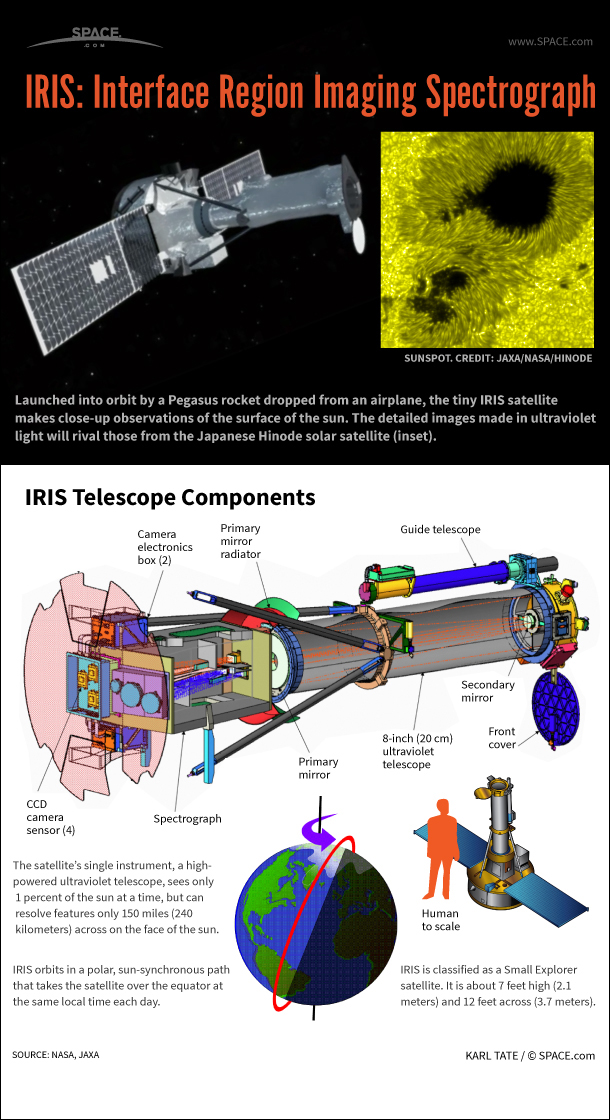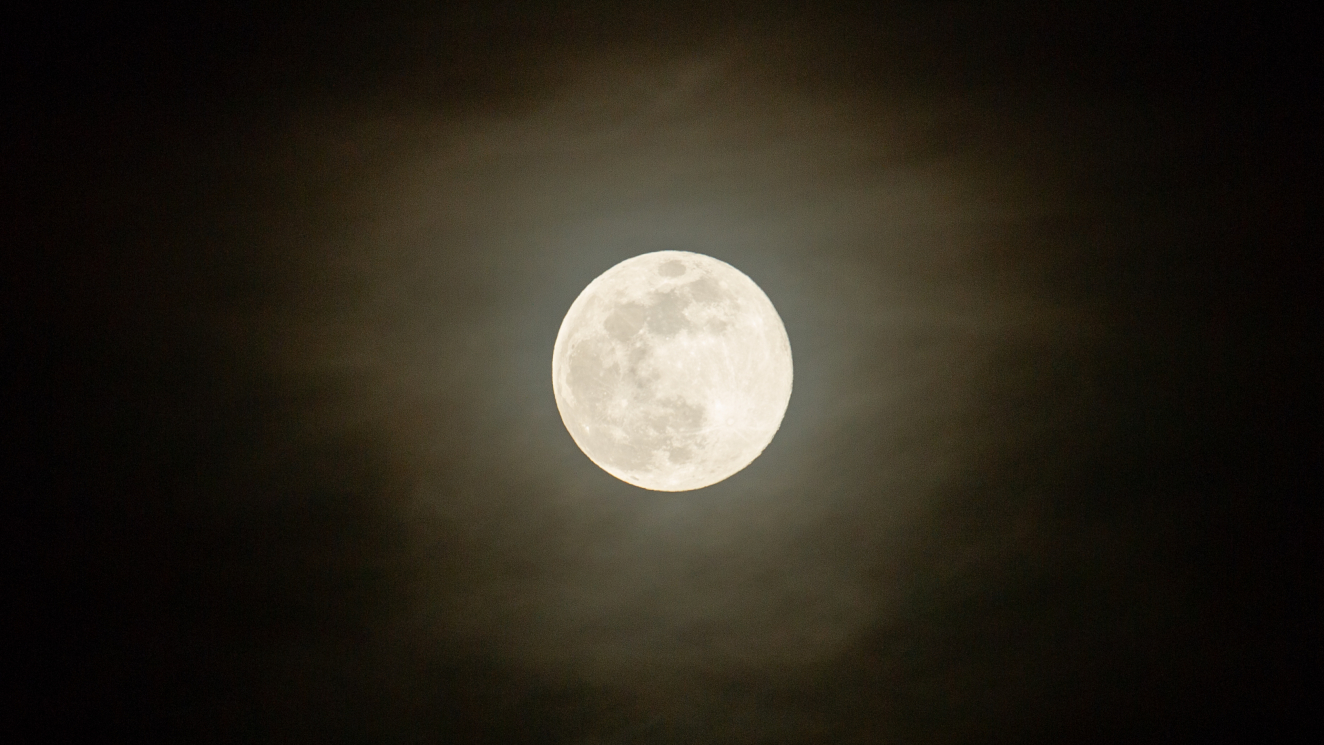How the Tiny IRIS Sun Observing Satellite Works (Infographic)

The tiny IRIS satellite makes close-up observations of the surface of the sun. The detailed images made in ultraviolet light will rival those from the Japanese Hinode solar satellite.
The satellite's single instrument, a high-powered ultraviolet telescope, sees only 1 percent of the sun at a time, but can resolve features just 150 miles (240 kilometers) across on the face of the sun.
IRIS orbits in a polar, sun-synchronous path that takes the satellite over the equator at the same local time each day.
IRIS is an acronym standing for "Interface Region Imaging Spectrograph." IRIS is classified as a Small Explorer satellite and is about 7 feet high (2.1 meters) and 12 feet across (3.7 meters).
- Video: IRIS to Spy Sun's Secrets
- Sun Unleashes Spectacular Solar Eruption (Photos)
- Stunning NASA Video Shows 3 Years of the Sun in 3 Minutes
Breaking space news, the latest updates on rocket launches, skywatching events and more!

Karl's association with Space.com goes back to 2000, when he was hired to produce interactive Flash graphics. From 2010 to 2016, Karl worked as an infographics specialist across all editorial properties of Purch (formerly known as TechMediaNetwork). Before joining Space.com, Karl spent 11 years at the New York headquarters of The Associated Press, creating news graphics for use around the world in newspapers and on the web. He has a degree in graphic design from Louisiana State University and now works as a freelance graphic designer in New York City.
